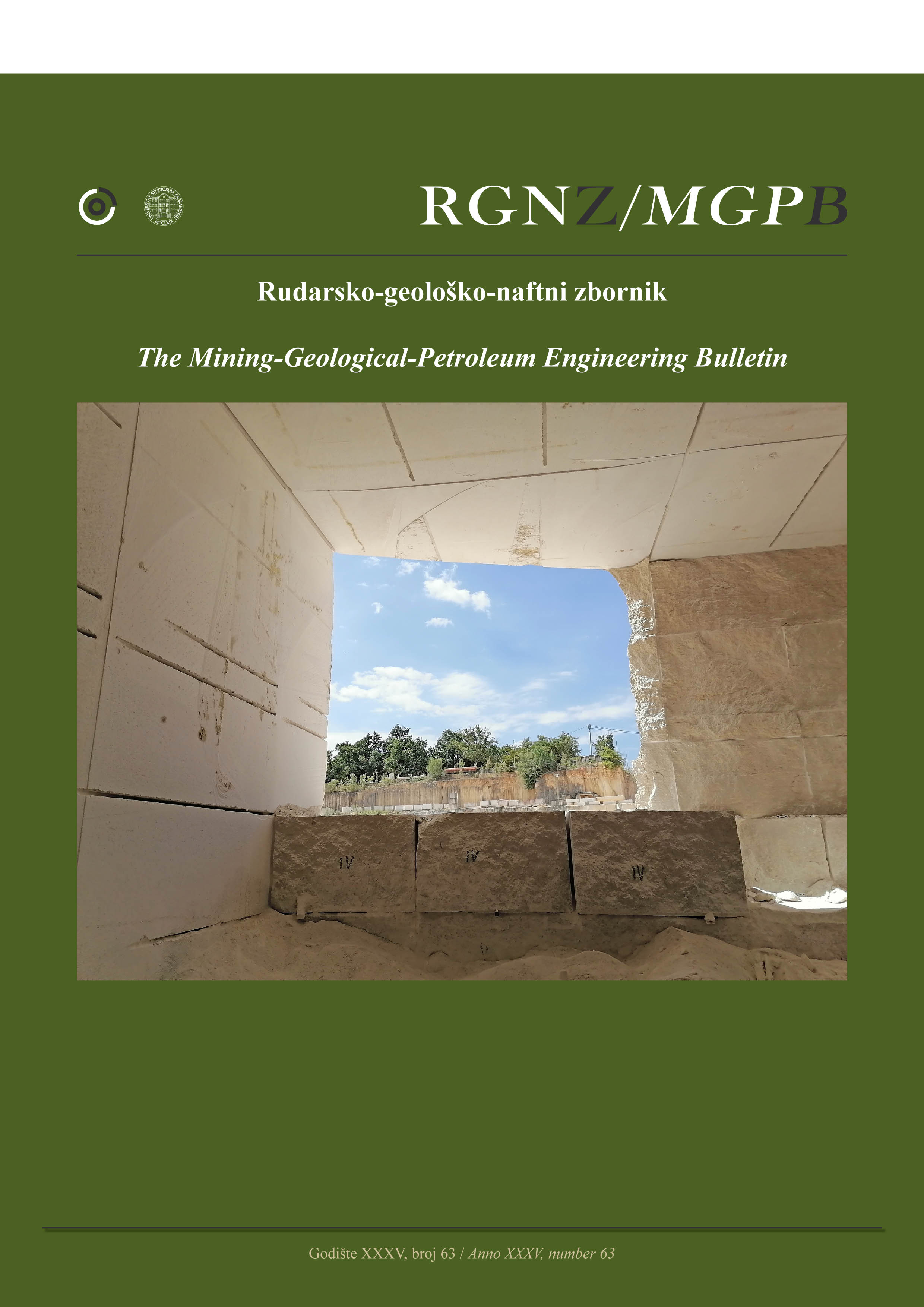Optimizing Cement Kiln Dust Density to Improve Landfill Air Space Utilization
DOI:
https://doi.org/10.17794/rgn.2023.2.13Keywords:
Landfills, compaction, waste management, disposal, environment, solid wasteAbstract
Optimizing the density of waste materials in landfills by proper compaction prolongs the facility life due to the efficient use of landfill airspace. Cement kiln dust (CKD) is a waste by-product produced in huge amounts which exceeds the used quantities in the cement recycling industry and beneficial CKD applications. The vast amount of CKD is almost landfilled in its loose state in Egypt which causes a big loss in landfill airspace due to the low density of CKD. The hydraulic binder effect and dusty behavior of reactive CKD complicates its compaction process. Accordingly, this research was performed to investigate CKD compaction properties with three types of lubricants, which are potable water, salt water and waste oil. Maximum dry density (MDD) and optimum moisture content (OMC) for these lubricant types and different wetting methods were investigated in order to improve the landfill air space utilization and to reduce the dusty effect of CKD during compaction. The effect of immediate compaction after wetting and the effect of compaction delay by allowing CKD to hydrate initially for a certain period were studied. Compaction energy and methods of the wetting of CKD either by full submergence in water or prewetting were tested. The maximum weights of a disposed CKD and durations required to fill an intended landfill air space for different CKD conditions, lubricant types and compaction methods were presented for a case study in Ain Sokhna, Egypt.
Downloads
Published
How to Cite
Issue
Section
License
Copyright (c) 2023 Mohamed Youssef

This work is licensed under a Creative Commons Attribution 4.0 International License.
Creative Commons-BY
Authors who publish with this journal agree to the following terms:
In agreeing this form, you certify that:
- You read the ethical codex of the RGN zbornik available at journal web.
- You submitted work is your original work, and has not previously been published and does not include any form of plagiarism.
- You own copyright in the submitted work, and are therefore permitted to assign the licence to publish to RGN zbornik.
- Your submitted work contains no violation of any existing copyright or other third party right or any material of an obscene, libellous or otherwise unlawful nature.
- You have obtained permission for and acknowledged the source of any illustrations, diagrams or other material included in the work of which you are not the copyright owner.
- You have taken due care to ensure the accuracy of the work, and that, to the best of your knowledge, there are no false statements made within it.
- All co-authors of this submitted work are aware of, and in agreement with, the terms of this licence and that the submitted manuscript has been approved by these authors.
Publication licence
You retain copyright in your submitted work, according to journal license policy (CC-BY). By signing this form you agree that RGN zbornik may publish it under the publication licence. In summary the licence allows the following:
Anyone is free:
- To copy, distribute, display, and perform the work.
- To make derivative works.
Under the following conditions:
- The original author must always be given credit.
- The work may not be used for commercial purposes.
- If the work is altered, transformed, or built upon, the resulting work may only be distributed under a licence identical to this one.
Exceptions to the licence
In addition to publishing the work printed under the above licence, RGN zbornik will also enable the work to be visible online.
The journal editorial can change the licence rules anytime but it cannot retroactively restrict author(s) rights.


